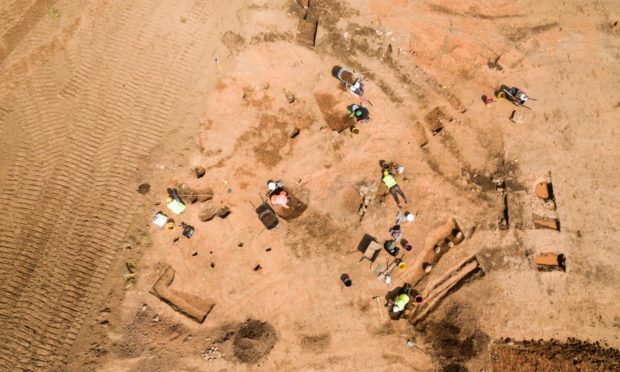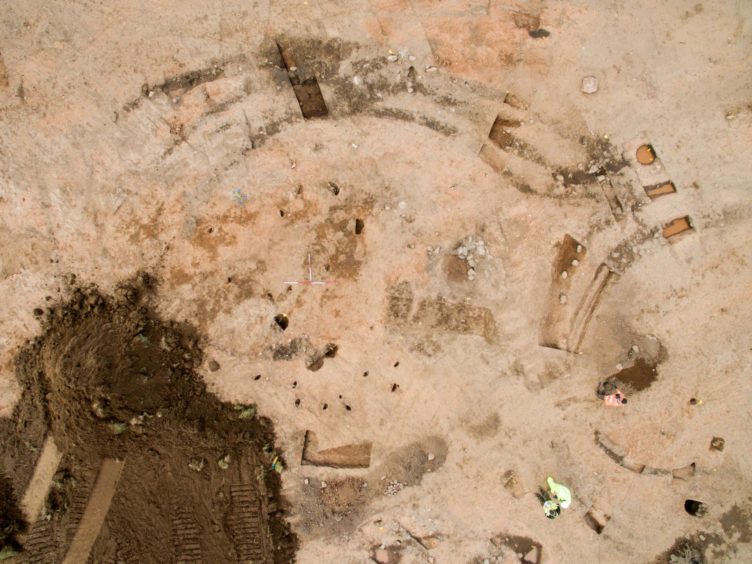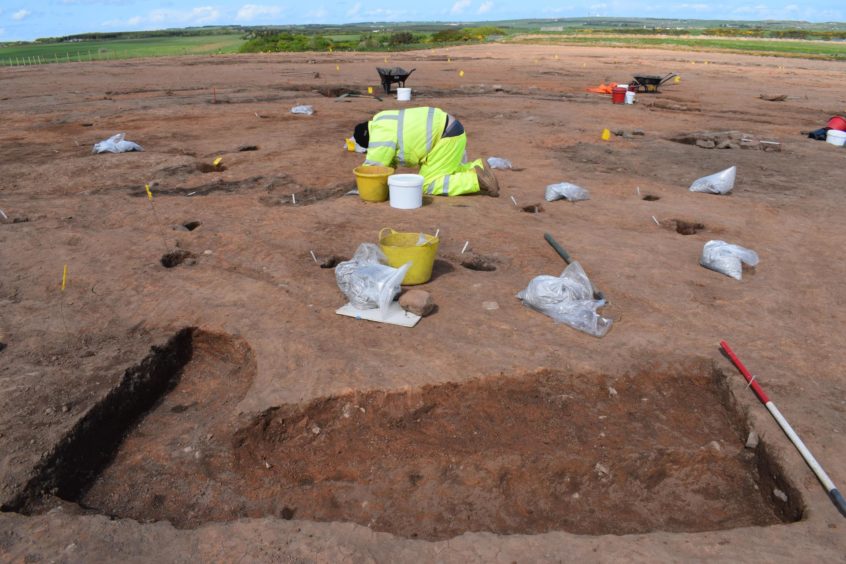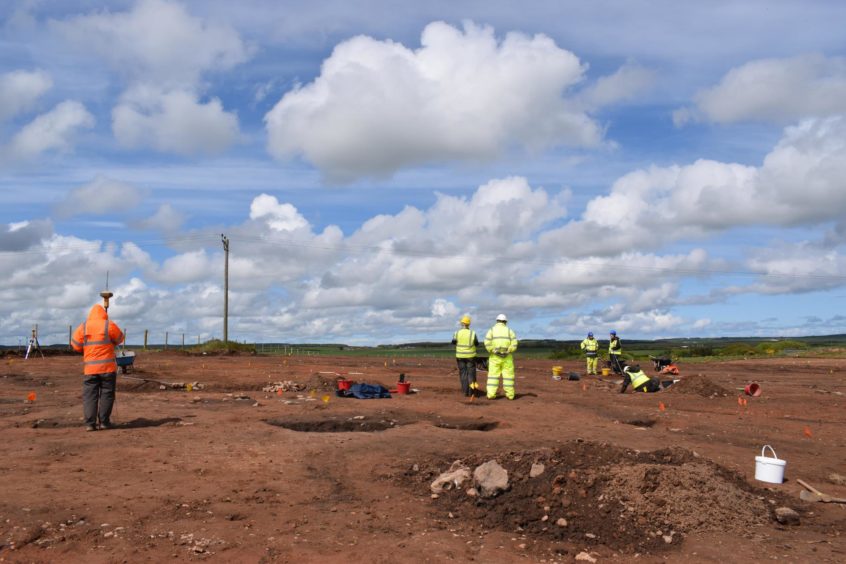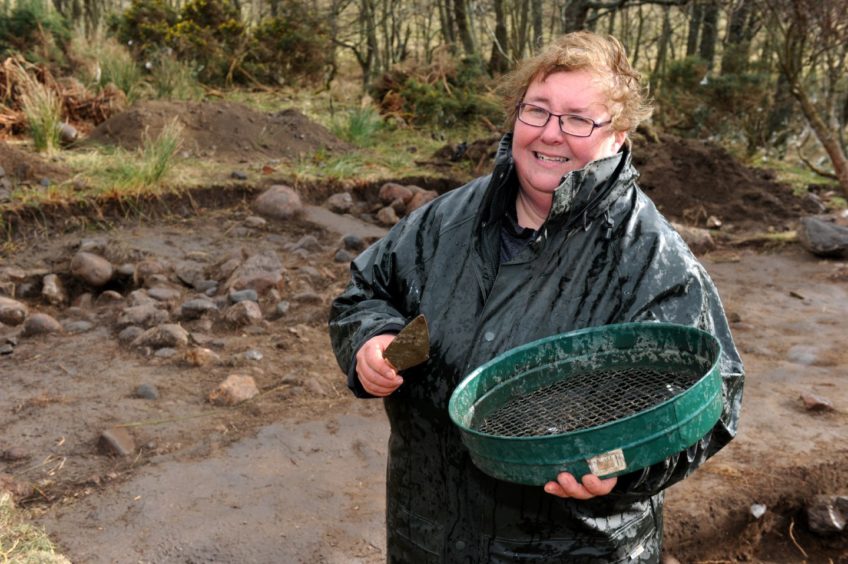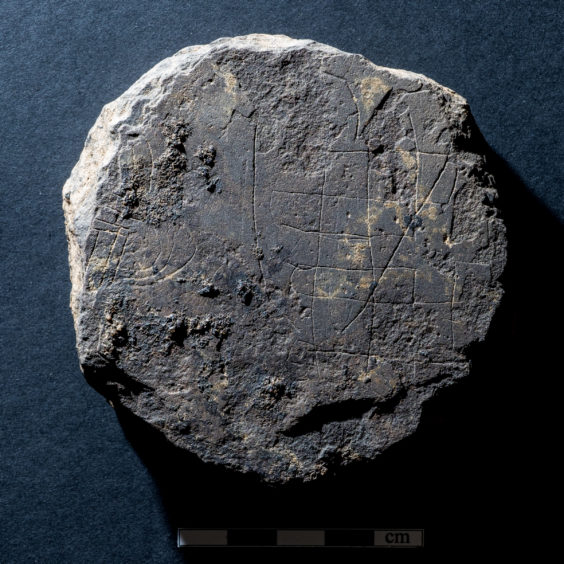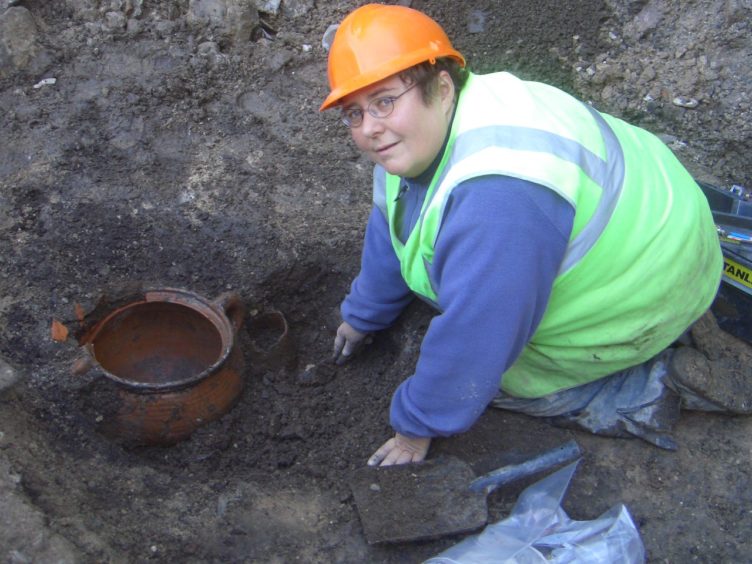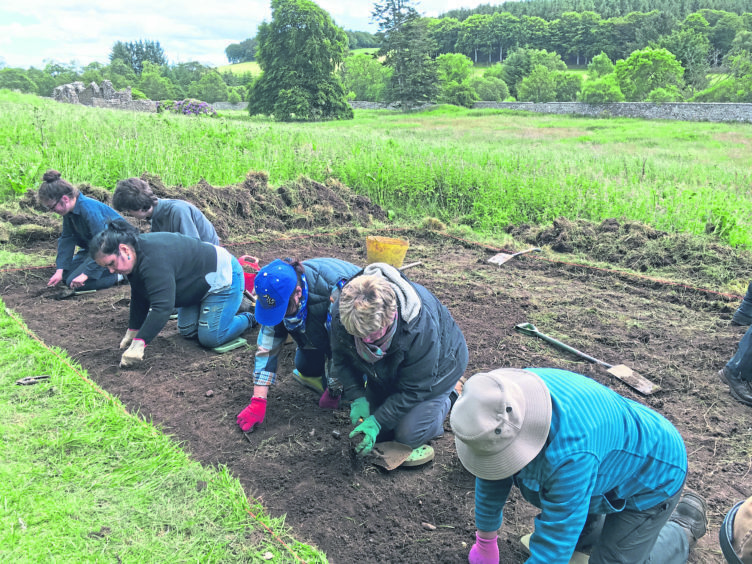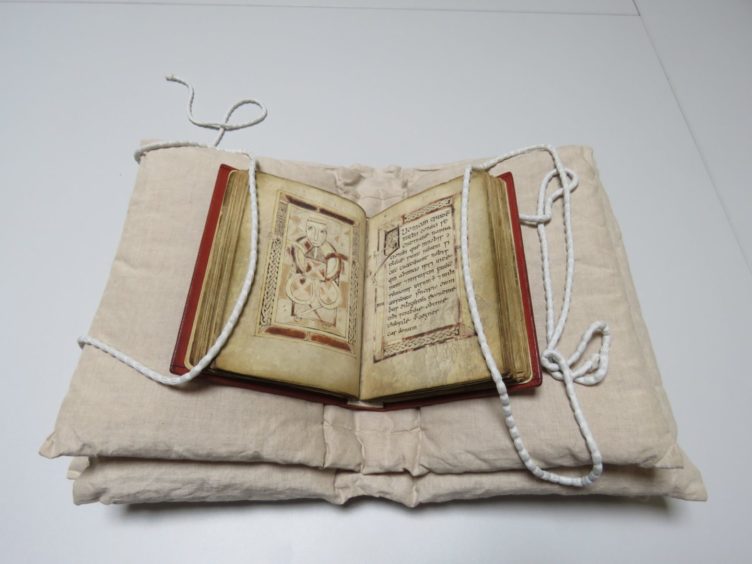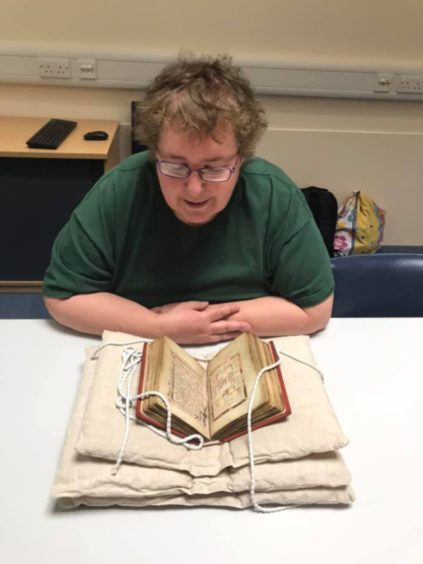Archaeologists have discovered an ancient settlement at Cruden Bay, dating back to the Iron Age.
Cameron Archaeology began the meticulous process of evaluating the Aberdeenshire site – which had been earmarked by Claymore Homes for the construction of new properties – in October 2017, with a total of 78 trenches being excavated, which revealed a number of “probable prehistoric features in the western portion of the site”.
Further work was carried out in May and June last year and it has now been confirmed that “at least 23 structures and other possible features were identified, along with prehistoric pottery and flint tools”.
Ali Cameron, who worked with Aberdeen City Council for nearly 25 years, prior to setting up her own company, has previously been involved in archaeological digs at St Nicholas Kirk, Marischal College and the Carmelite Friary in Aberdeen, while continuing her efforts to find the lost Monastery of Deer in Aberdeenshire.
She said: “The find of such a large settlement was very exciting.
“The team of archaeologists who excavated the site had to work hard in the driving wind and rain and the heavy clay soils – it was an Aberdeenshire early summer!
“The settlement is probably late prehistoric in date, and it’s likely to be Iron Age from around 800BC to 400AD, but we will have to wait until the samples have been studied by Aberdeen University’s archaeology department and organic material recovered has been dated to know for certain.
“The stone tools are being studied by lithics specialist Ann Clarke, near Edinburgh, and she has just provided us with a preliminary report.
“Claymore Homes have been fully supportive during all the archaeological works and, as is required on developments of this type, they have paid for the excavation and are currently paying for all the analysis of finds, processing of samples and a report in an archaeological journal.”
Mike Shepherd, a spokesman for the Port Errol Heritage Group, said that his members were thrilled at the news.
He added: “You sometimes gets told in Cruden Bay that it never gets boring here and the history of the village shows that this has been true for a very long time.
“For example, we had a Viking battle in 1012 and it now seems that our heritage extends even further back in time than anybody knew.
“The discovery of a prehistoric settlement here is astonishing. Just consider it: an ancient village, which has been forgotten about for centuries and now it is finally, gradually coming to light.
“There will be great curiosity to find out more about these ancient people who long ago made our place their place.”
Ali confirmed the analysis will continue in the months ahead. And she has also offered to meet the residents to explain more about her findings in the future.
Ali Cameron has spent decades delving into the past for treasures
Ali Cameron’s love for archaeology shines through her conversation.
Ever since the 1980s, when she arrived in the Granite City, she has been delving into the past with a fervent curiosity and desire to learn more about the intriguing history of the generations of different people who lived, loved, married, prayed, pursued different trades and died throughout the north east.
It’s a crusade which has seen Ali involved in large urban digs, such as a meticulous excavation at St Nicholas Kirk and Marischal College in Aberdeen, and also make discoveries at more isolated locations in Moray, Aberdeenshire, Angus and Tayside.
Yet, while many of her endeavours have provided exciting revelations, she never forgets that she is dealing with humans from the past, who deserve to be treated with respect, even though they died centuries or even millennia ago.
Ali spoke poignantly about one such encounter at Marischal College and it’s obvious she has never forgotten the sight of the bodies of “seven monks who were excavated still with their hands clasped in prayer after 500 years in the ground”.
There have been many similarly evocative and occasionally spine-tingling experiences for this redoubtable character who combines passion for her vocation with the attitude that genius is an infinite capacity for taking pains.
But let’s venture back to where it all started four decades ago.
She said: “I did Archaeological Sciences at Bradford University from 1980 to 1984, then I became a human bone specialist and came to Aberdeen University in 1985 to carry out a contract reporting on the bones from the Aberdeen Carmelite friary.
“After that was completed, I realised I liked the city, met the team working for the city council’s archaeological unit and went on to work for them for 24 years.
“That involved directing large urban digs including the one at St Nicholas Kirk, where I led a team of 100 people for a year and excavated nearly 1,000 burials.
“There were many other projects at Marischal College, the Carmelite Friary Phase 2, the Bon Accord Centre – around 50 in total.
“Then, in 2010, I took a package from the council and started Cameron Archaeology and I now do developer-funded digs, building recording, research excavations and other things. There have been 520 projects so far and counting.”
Ali never rushes into any historical initiative, nor craves headlines, although more than 14,000 visitors and several television crews took a keen interest in her group’s exertions at St Nicholas Kirk.
She and his colleagues were also caught up in the global media attention which focused on the search for the lost monastery of Deer in Aberdeenshire and this remains a work in progress.
She added: “It’s often a gradual process, because we have to patiently wait to get samples processed and therefore dated.
“But there are what you might call ‘Eureka‘ moments such as happened in 2018 at Deer Abbey when we were searching for the monastery and my colleague, Jan Dunbar, who is also an artist, came up to me with her hand behind her back and brought out a beautiful circular stone with scratches on it.
“We knew that it was a gaming board and was medieval in date and would have been used for a game like chess or 9 Men’s Morris – Hnefatafl.
“The story went round the world and we were being filmed which was amazing. We have since found that another stone from the site was also scratched into a gaming board, but I didn’t see this until I took the finds home and cleaned them.
“Later, we had the samples from post-holes dated and it emerged that we had excavated a structure which dated to the late 7th or early 8th century, which might be the monastery of Deer.
“But we need to uncover more of this and so we are fundraising at the moment to find this work, which will hopefully take place in 2022.
“It’s very positive that there is an increasing amount of interest in archaeology and there are so many developments all across the area.”
Ali isn’t in any mood to let anything – even a pandemic – stem her operations, but she admitted that nothing happens quickly in her vocation, where it’s better to be conscientious and correct than pursue the limelight with incomplete research.
But, as an increasing number of new houses are constructed on green-belt sites, the greater the likelihood there is of fresh discoveries being unveiled about those who farmed and lived on the land throughout the north east.
She said: “Burials are still my passion and you can find out how people died, diseases from which they suffered, how old they were when they died, whether they were male or female, where they grew up, what clothes they were buried in…and so on.
“The developer-funded sites are part of the planning process, because a client needs to carry out certain archaeological work and this often involves excavation. We uncover remains of structures, burials and other things which people have left behind.
“Careful excavation allows samples to be collected from pits and these are analysed to find out what the environment was like, what people were cooking and eating, what tools they were using and, essentially, how people lived and died.
“As regards structures, post-holes will contain wood and we can work out from the pattern of the holes what the building looked like, what wood it was made from, with radiocarbon dating letting us understand when it was built.
“I have been fascinated by archaeology all my adult life – I still feel the same way about it as when I first arrived in Aberdeen 35 years ago.”
Her voice oozed enthusiasm.
It’s clear that Ali Cameron has no intention of giving up on her search for monasteries, houses and graves from bygone generations.
Search continues for lost monastery
Ali Cameron is among the archaeologists who have been involved in the lengthy quest to find the lost Monastery of Deer in Aberdeenshire.
She and her colleagues have unearthed evidence of both the monastery and analysed extracts from the Book of Deer, a 10th-century illuminated manuscript, which contains the oldest pieces of Gaelic writing to have survived from early medieval Scotland.
Ms Cameron said that details written by monks in Scots Gaelic in the margins of the Book of Deer had provided “tantalising clues” of the Monastery of Deer surviving for a time even after they moved to Deer Abbey.
A campaign has now been launched to help raise more than £40,000 to support two major north-east archaeological digs.
The Book of Deer Project initiative has been working since 2008 to find the monastery.
Those involved are hoping to raise between £40,000 and £50,000 for what they have called Project Open Hart – Revealing the Secrets of the Deer Field.
The dig is scheduled to take place in 2022 and members are convinced they can make further interesting finds following a number of exciting discoveries in recent years.
Chairwoman Anne Simpson said: “At the last dig in 2018, there were some interesting finds, such as a round flat stone with a game engraved on it.
“The response from local youngsters has been fantastic in the past. It’s a great way to spend time outdoors and learn more about the history of the local area.”
The second project, which will be a partnership with other groups, is for the loan of the Book of Deer from Cambridge University.
Mrs Simpson said: “This is really exciting and my hope is that it will be put on display from May to October in 2022, which will tie in with the Year of Scotland’s Stories.
“It is something that could be combined with other events and exhibitions.”
